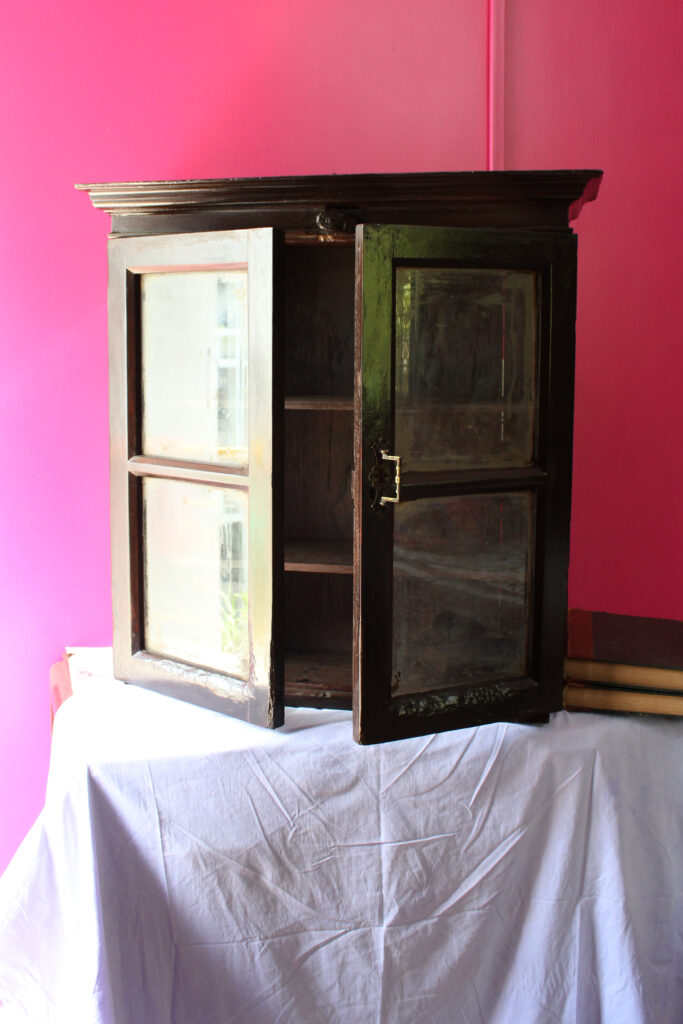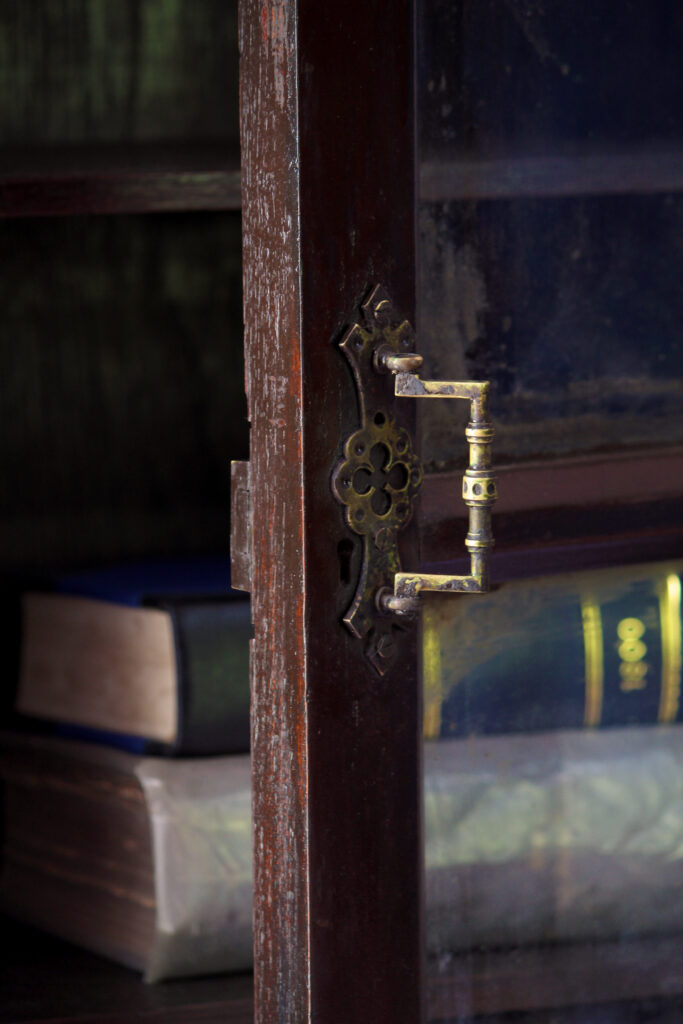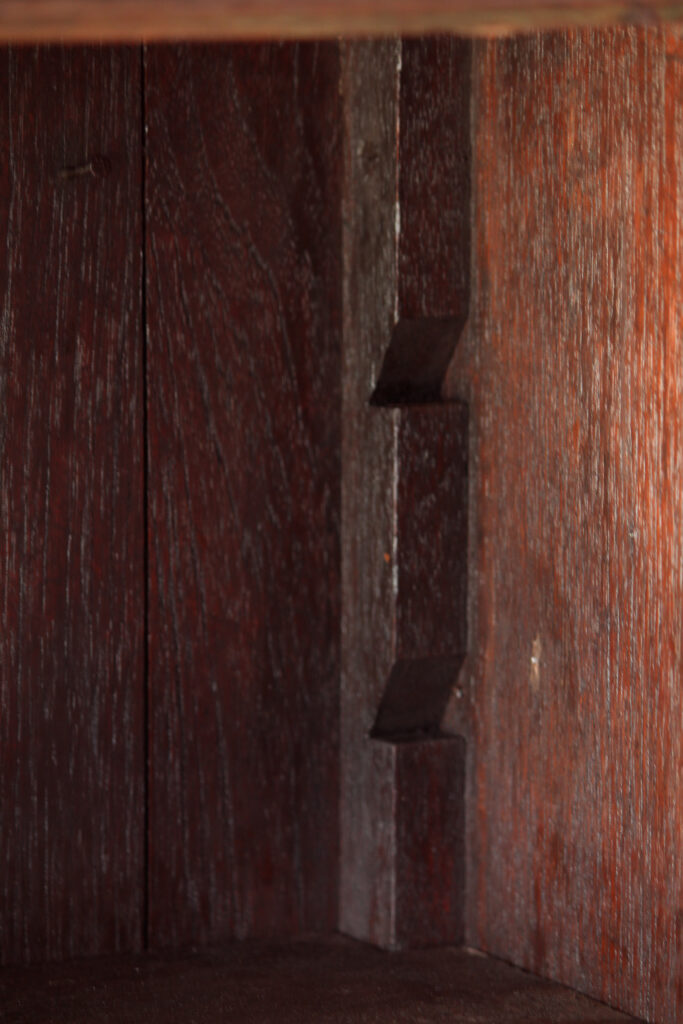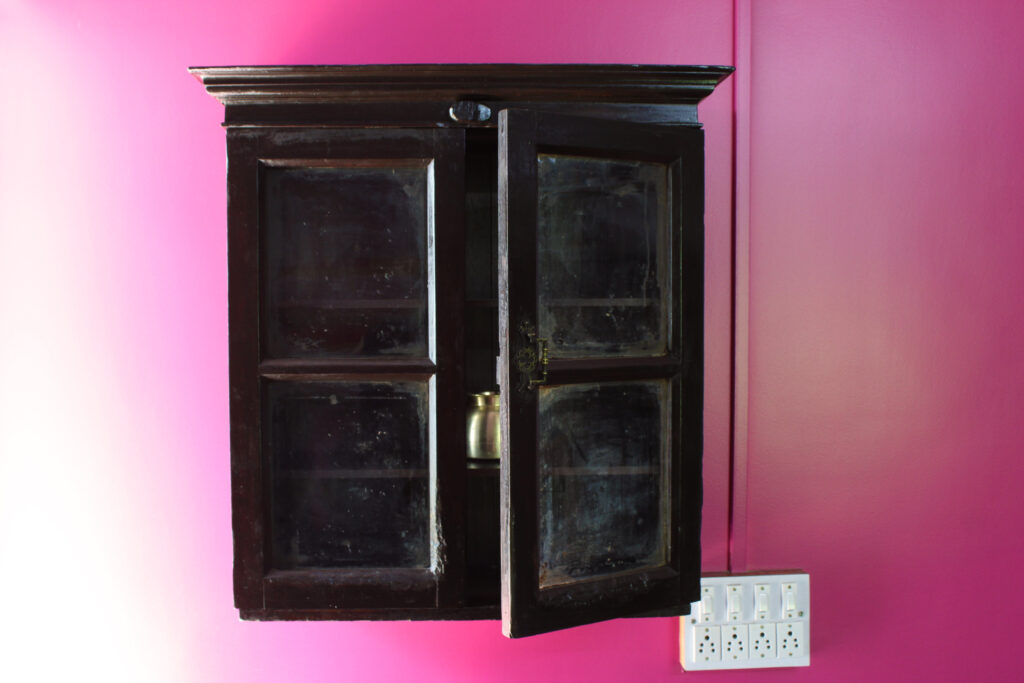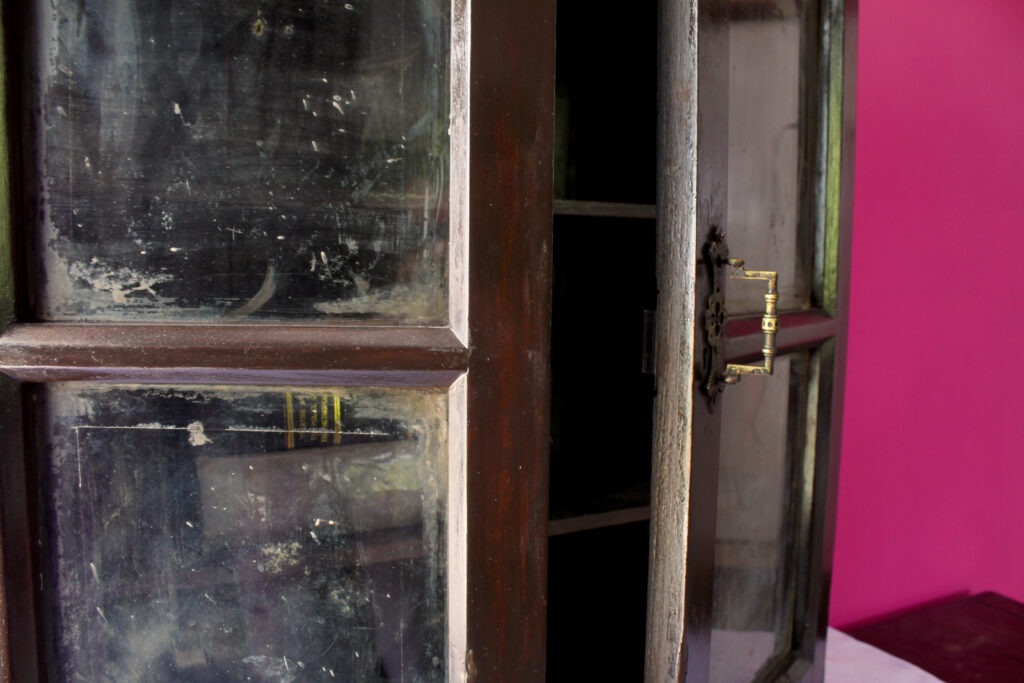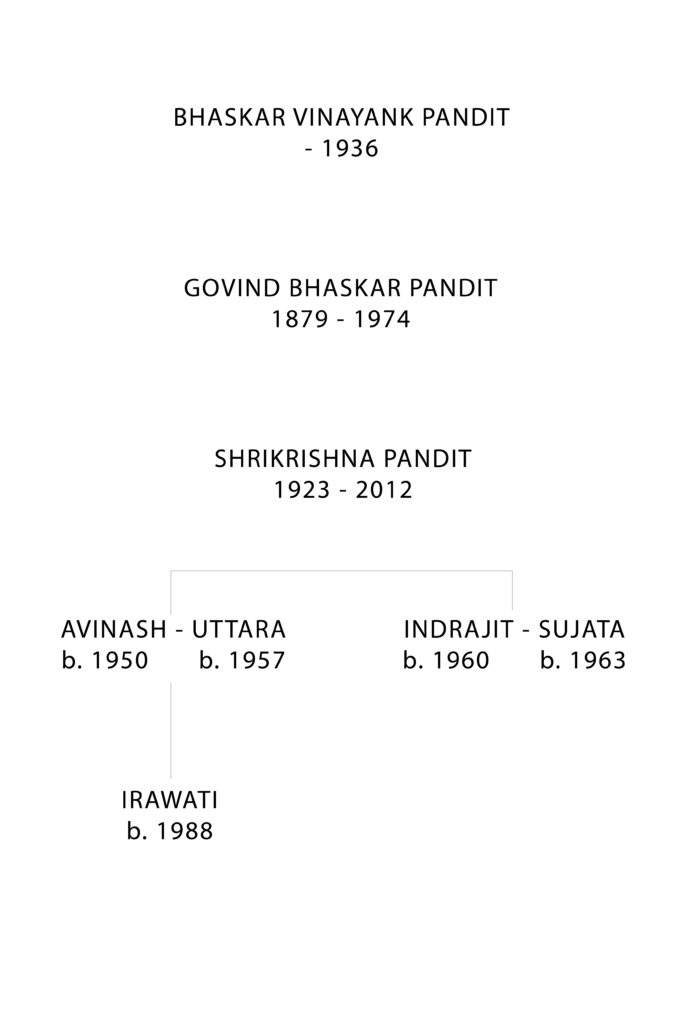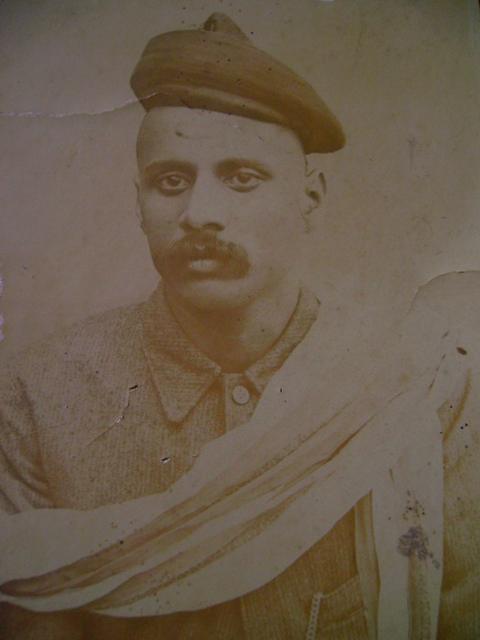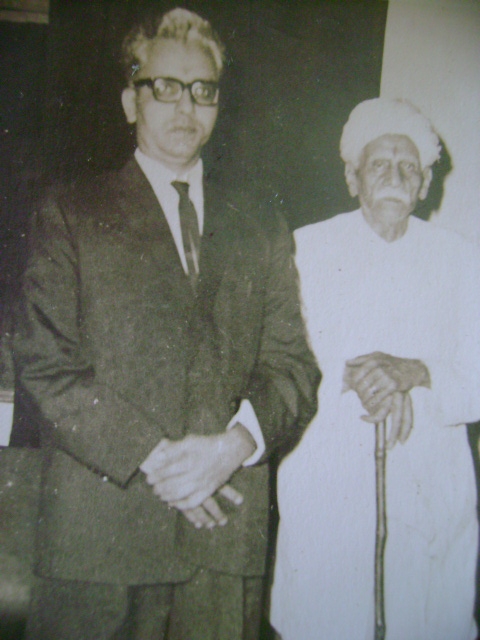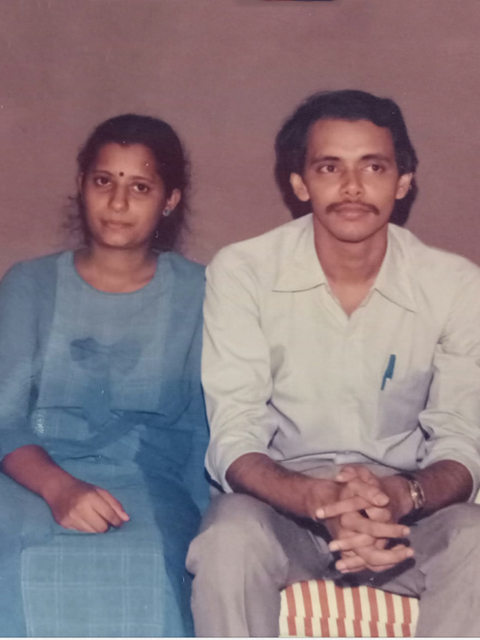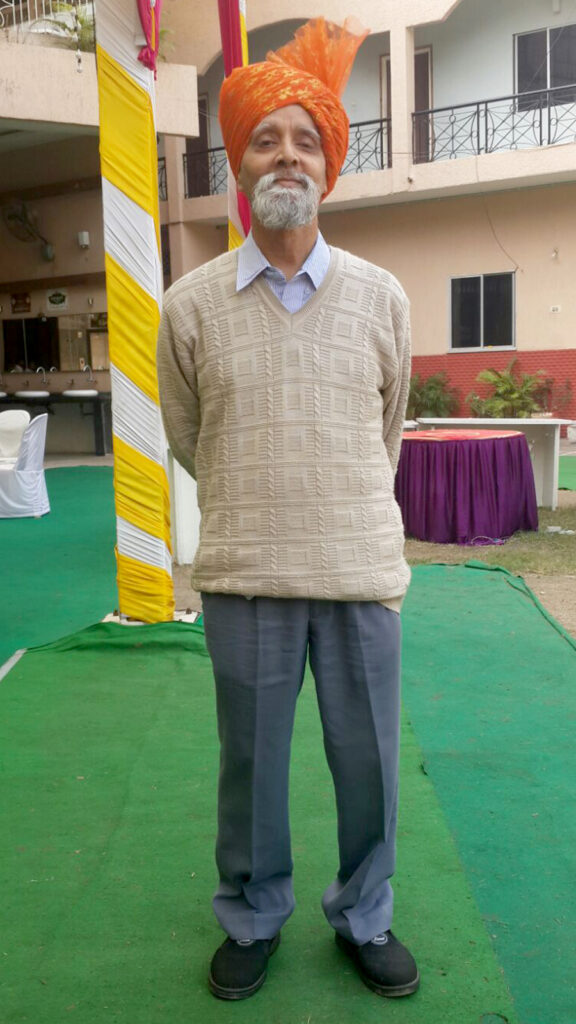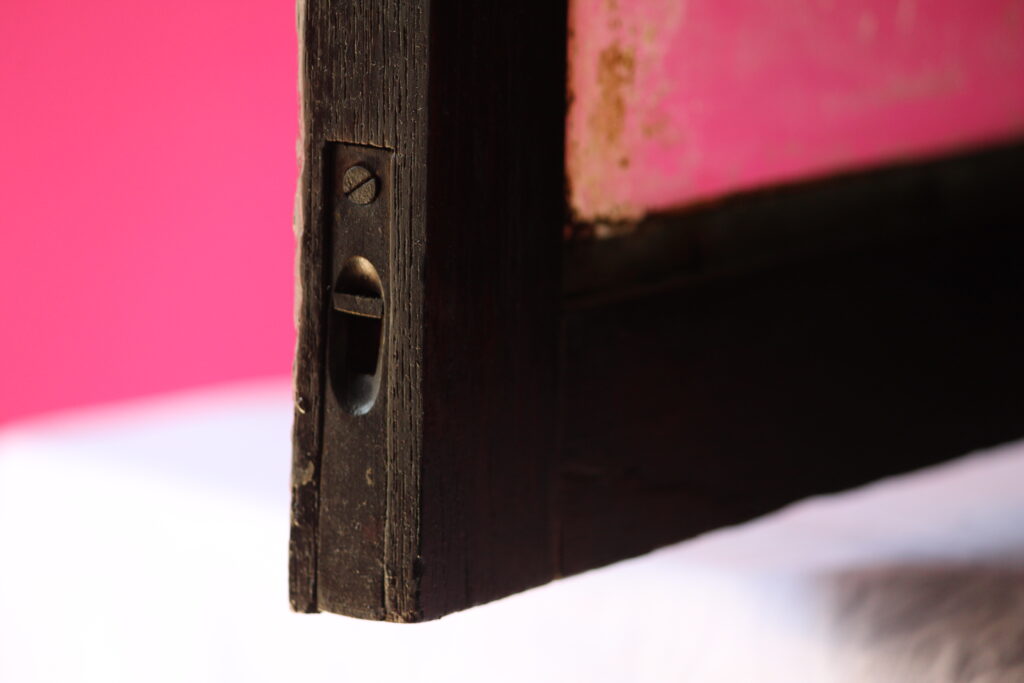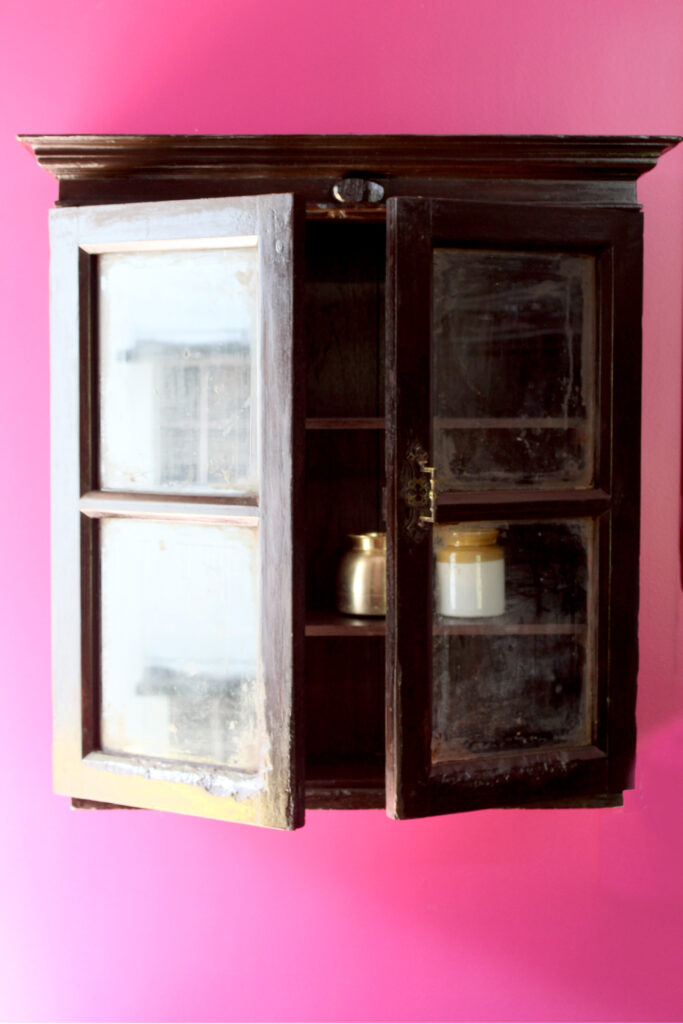TEXT BY IRAWATI PANDIT
PHOTOGRAPHS BY VIDYUTH SINGH & KETAKI DHERE
Pune, Maharashtra
My paternal grandfather, my maternal grandmother, and my father have all narrated many stories of our ancestors on all sides. Listening to these stories, I have often imagined many a lives and incidents and through their tellings, have developed a strong affinity for all things old, including this old cabinet. I first laid eyes on it in 1996 when I was 8 years old, around a hundred years after it was made. It is a rectangular medium-sized piece, still retaining its elegant dark brown coloured polish.
It has been built in pure sag or teakwood, with distinct marks of the handmade artistry. In terms of structure, the cabinet can only be described as typical, with two shelves and two doors, closed with a latch, and a three-part lock.
However, the beauty lies in the details. The right door panel has an ornate handle to open the cabinet. The handle is probably made of brass and has an early 20th century design with geometric patterns. However, the handle may have been an addition, since there is also a simple lock adjacent to it. The wooden latch itself, most probably from the original structure, is made out of teakwood and has been pruned into a triangular shape. Above the doors, the cabinet includes a balcony-like structure with a railing, which provides more storage space. The railing is bevelled with layered lines as decoration.
Inside the cabinet, the four stiles have dents at regular intervals in which the shelves fit. Those allow the user to move around the shelves and customise the compartment sizes, based on how they are using it. Adjustable furniture, which we see as a modern invention with the advent of user experience, was apparently also in usage about a 100 years ago.
The cabinet does not denote any typical Maharashtrian cultural attributes, except perhaps suggesting the socio-economic position of its owner. The use of glass indicates a level of affluence, since glass was expensive and rare in those days. It was originally commissioned by Bhaskar Vinayak Pandit or Aṇṇā, as we knew my great-great grandfather, some time towards the latter half of the 19th century. But the story of the cabinet is as migratory, as the family that possessed it.
Its first owner, Bhaskar Pandit, was a 3rd generation Punekar (someone hailing from Pune) and worked as the equivalent of an estate manager for the Pune estates of Shreemant Ramchandra Rao Gopal Rao or Appasahib Patwardhan of the Jamkhindi principality, now in Karnataka. Bhaskar Pandit resided at what is now our ancestral house in Pune, at 504, Narayan Peth[1], an unassuming wooden house, a typical wada, in which lived this wooden cabinet. It enjoyed its stay there till 1954, for a span of perhaps 70 years. My grandfather was born in the same house and stayed there briefly. In the olden days, such a cabinet was considered as model storage to store trinkets. The story goes that Bhaskar may have stored his attar (perfume), which he was fond of, or medicinal vials.
Govind Bhaskar Pandit or Dādā, as everyone refers to him, my great grandfather, was the only surviving son of Bhaskar Vinayak Pandit. He was a jeweller by profession, after a short stint as an accountant in Hyderabad. He inherited the cabinet as well as his father’s fondness for perfumes. Govind Pandit happened to shift residence twice during his lifetime and the cabinet followed him everywhere – to Raviwar Peth in 1954, and then to 353/3 Shaniwar Peth in 1958, to our bungalow, named Manisha. The cabinet’s destiny didn’t change with Govind, for the fragrance of perfumes still occupied its corners. In 1974, when Govind passed away, the cabinet was bequeathed to his son, my grandfather.

The Pandit family tree 
A young Govind Pandit 
Govind Pandit in his later years
Shrikrishna Pandit, my grandfather, Ājobā, was born in 1923 in Pune. He was an engineer by profession and stayed in Mumbai most of his life, although Pune remained his favourite. Personally, he was one of the first people to inculcate the history of my family in to me, and along with my father, remains one of the biggest reason why I am interested in history at all.
In 1982, the bungalow Manisha in Pune was demolished to make way for a high rise, and eventually, the family made its way to live on the top floor of this new building. But from 1982- 1988, the cabinet remained in a warehouse, since the building was under construction. Then in 1988, as newlyweds, my youngest uncle and aunt, Indrajit and Sujata, used it in their house for about 8 years, till 1996. My aunt used it as what we call in Marathi (Dūdh-dubhtyaca kapaaṭa, literally a cupboard to store milk and dairy products). This type of cupboard may have been a predecessor to the modern refrigerators. Considering the vast storage space, such a cabinet was vastly crucial to a well running kitchen.

Shrikrishna Pandit with Govind Pandit 
Sujata and Indrajit Pandit 
Avinash Shrikrishna Pandit
In 1996, the cabinet came to my father, Avinash Pandit (my Bābā) the eldest son of Shrikrishna and Vijayalakshmi, born in 1950. He is a keen family historian of the Pandit clan and my primary source of all information. He was also the one to notice the marks from the liquids stored in there decades ago. For him, this was an important piece of tangible history of his ancestors, and an avenue for his fondness for his grandfather.
As an 8-year-old, I wanted little to do with this object. It was old, brown, a little smelly, and didn’t go with our colourful new house at all. For that time and about 20 years after, it was destined to remain in a corner of the kitchen, away from the eyes of guests. It held our medicines, unused kitchen items and some emergency lights, but was largely ignored unless someone needed a tablet, a new toothbrush or the electricity went out.
Over the years, it has developed a distinct smell, a concoction possibly of Bhaskar, and Govind, and aged perfumes and medicines. As my grandmother would have said ‘Kay he chitra-vichitra vaas?’ (What is this strange odour?). Today, I, Avinash’s youngest daughter, now claim it as my own. I will be a 5th generation user/owner. This cabinet will now host my ever-expanding collection of antique books, some of which may have been just a few years younger than the cabinet.
Although pushed from corner to corner, it now rests peacefully in an open space of the room, from where it gets the light of the day. Freshly polished, towering over my writing table and a stark contrast to my pink wall. It may have been perched on a wall similarly while at 504 Narayan or 353 Shaniwar, standing testimony to the history of my family. The cracks, the dents, and the marks on the shelves all tell a story that it was well used and well loved, since it has travelled distances as well as time.
To me, this cabinet acts as a time capsule, as well as one of the things that connect me with people I have never seen, but form a part of my existence. How else would I have known about Bhaskar Pandit’s love for perfumes or supposed that at one time it held precious jewels used in Govind Pandit’s business? I may have always associated the smell with the 21st century medicines, forgetting that once, in another suburb of Pune, someone else also used it to store something dear to them.
I have been told that I am a typical ‘Pandit’, encompassing all traits of my patrilineage. But perhaps, it is more than just traits; I also have something tangible to call my inheritance.
[1] Pune is divided into several ‘peths’ – settlements/ suburbs named after eminent personalities or days of the week which were established during different periods in time.

